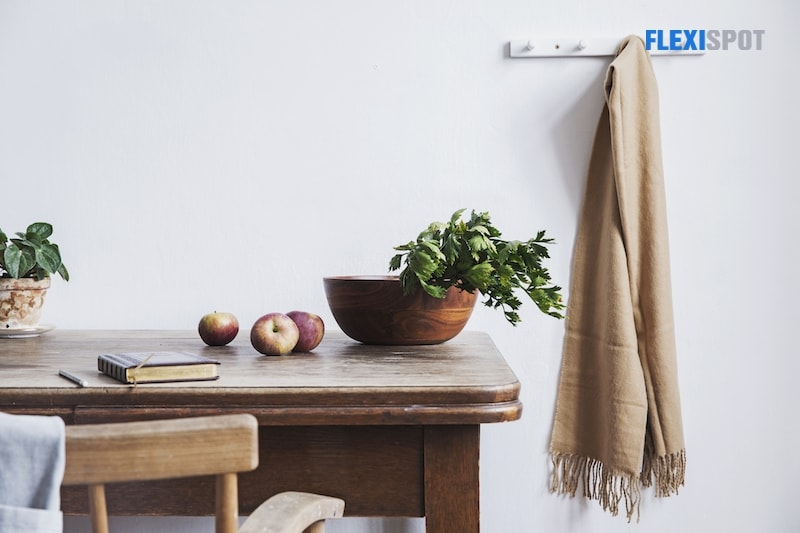We are in Code Red. We can’t stay deaf forever to Mother Nature’s cries for help when its resources are finite and can’t keep feeding us forever. The climate is getting warmer; animals are going extinct; lands are going barren, and the oceans are becoming more polluted than ever. Needless to say, humans have abused their stay and have exhausted the owner’s hospitality to the core.
With depleting Earth resources, many industries are vowing to do the planet better. From developing eco-friendly fabric to manufacturing green cars and cutting harmful chemicals to making sustainable furniture, the economy is shifting gears and is slowly prioritizing nature before profit. While there is so much to be done with so little time, we still try our best to save this planet for future generations.
Take for instance the changes the interior design space has been welcoming. Innovators are changing the game and are putting mindful design at the forefront. The goal is to create quality furniture that lasts without damaging the planet---all while continuing to provide comfort, function, and style for the discerning consumer.
But what exactly is sustainable furniture?
Sustainable furniture is designed with the end in mind. Basically, it thinks of ways on how a piece of furniture, for instance, can be reused and recycled to its full potential before getting discarded. Sustainable furniture is also designed with respect to the environment. Eco-friendly materials are sustainably sourced to produce furniture that is not damaging to the environment.
We list down in this article some eco-friendly wood types that manufacturers have been using to develop products, a sustainable way.
1. Bamboo
One eco-friendly type of wood is the strong, durable, and versatile bamboo. It is easy to maintain and clean. What’s great about bamboo than other types of wood is that it releases 35% more oxygen.
Bamboo can be harvested in a relatively short span of time ranging from one to five years. It does not require new land to plant some more, because it grows a new shoot from an existing root. It can grow on almost any terrain. It is antibacterial, making it even more durable.
2. White Ash
White ash or Fraxinus Americana is harvested from FSC-certified forests in central and eastern U.S. and southeastern Canada. This wood is commonly used for athletic equipment such as bats and hockey sticks. It is as strong as oak and its grain pattern is pronounced. It can also be used in making tool handles, railroad ties, canoe paddles, and boats.
3. Oak
Oak is durable, strong, and naturally water-resistant. Its grain pattern is distinctive with its large, open pores that make the texture coarse. It can absorb stains easily as well. oak is commonly used for flooring and making cabinets and furniture.
4. Black Cherry
Looking for wood with more personality? Black cherry is an excellent choice. Its original hue is pink or reddish but since the black cherry is sensitive to light, it will darken immediately in direct sunlight. This type of wood is softer than ash and oak. It has a fine swirling texture and a straight grain. It grows predominantly in North America. It is often called the poor man’s mahogany. It’s typically used for making musical instruments and other household wooden items.
5. Pine
Pine is widely available because it grows fast, even faster than oak or mahogany. It has around 60 species in the U.S. It regenerates and stores carbon fast. The white pine with the tight grain is used for furniture and building materials. It is said to have a low carbon footprint because its waste is often recycled as by-products or biomass pellets.
6. Mahogany
Mahogany is a popular wood option because of its deep, reddish hue and fine texture. It’s hard and durable, scratch and dent-resistant. It is also waterproof which makes it a perfect material for outdoor furniture. Aside from its relatively expensive price point, most mahogany is not sustainably sourced or grown. Opt for Jatoba and Aridoba that come from forests and farms certified by the Forest Stewardship Council (FSC).
7. Maple
A close-grain hardwood, maple is less subtle than oak or ash. No dent can pass maple wood because it is extremely hard. It is non-porous and cannot absorb dark stains. Note that it yellows towards old age. Look for the FSC certification before buying anything maple. It is grown abundantly in North America. Interesting to add that maple is considered “tonewood.” It may conduct sound waves and resonate well with the sound waves created.
The Climate Positive Workstation
20 years in the ergonomic business, Flexispot continues to provide products that have the customer’s best interest in mind. As a company, Flexispot understands the urgent need to respond to climate change and commits to doing its part by having products under its Climate-Positive Workstation.
It now has multiple products in its catalog with a bamboo desktop: the Comhar All-in-One Standing Desk, Kana Bamboo Standing Desk, Kana Bamboo Curved Office, L-shaped Standing Desk, and the AlcoveRiser Bamboo Standing Desk Converter. Flexispot makes sure to retain the elegant texture and natural grain of every bamboo strip using lateral compression technology. All of these are height-adjustable products with spacious desktops. They have a weight capacity ranging from 110 lbs up to 275 lbs.
Some products are currently on sale including the Comhar standing desk with a $100 discount and the Kana Bamboo standing desk that is less than $20 and would offer a discount for an MT1 desk mat worth $9.99. The AlcoveRiser Standing desk is also on a $20 discount.
Final Thoughts
Wood is a sustainable furniture material because it is sturdy and durable. It can also be easily repurposed and recycled into something new. Many sustainable products are made of recycled wood.


